FAST TIMES IN THE WINDVANE BUSINESS – A BROADSIDE
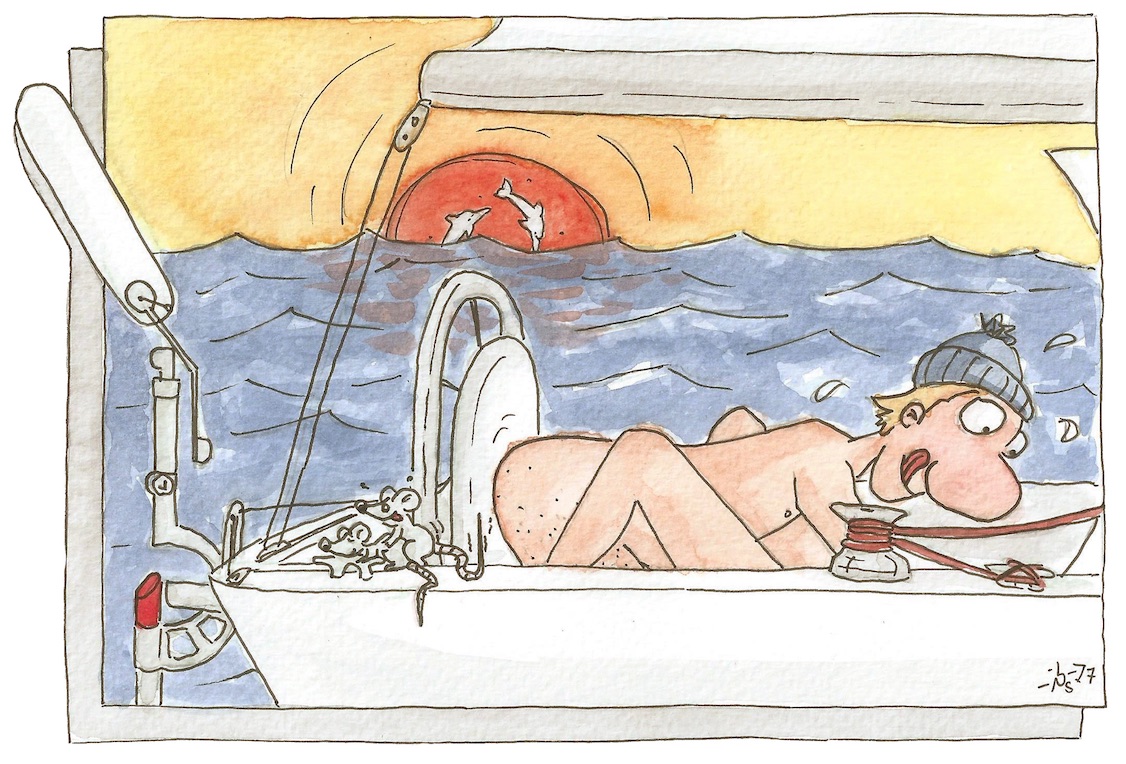
How can I advance my brand in a watery niche that defies all the usual rules, a niche in which the target customer is inevitably an outlier, one of society’s black sheep? How can I generate enthusiasm for a product that quietly gets on and does its job while skipper and crew, freed from penance at the helm, amuse themselves with whatever else takes their fancy afloat? Why not with a cartoon? Who needs words when a skilfully crafted image can catch the eye of people who might not otherwise be interested while also putting a smile on their face? Thanks to Inga, this doesn’t have to be a rhetorical question. I’ve been enjoying her work for years and it seems only right to share it more widely.
Looking at things from a purely objective standpoint, I am on very safe ground: the laws of physics are on my side and so, it seems, are all those contented sailors all over the world who carry on spreading the word about my brand without me even having to leave my chair. Word of mouth is effective and reliable – and has been for decades. It’s a wonderful labour-saving device that leaves me time to live, work and write. The solitary downside, in fact, is the friction it creates with those who have yet to reach a similar critical mass of satisfied customers.
Truth be told there is one ever-present and ever-pressing question concerning my operations in the wet and salty market whose complexities (be they ever so trivial) do cause me the occasional headache: what is the best way to plant thoughts of Windpilot in the sailor’s mind? Or, taking it from a different angle, what are my competitors doing to claim that vital spot on the transom for their own?
Trade fairs, advertisements, paid-for magazine articles and the like make our eyelids droop. We’ve all rumbled how they work; we know the tricks, we understand that whether it’s up-front entry prices or less obvious monetarisation techniques, nothing happens until palms have been crossed with silver. The market economy likes to have its tentacles in everyone’s wallet.
Having served time at 220 international boat shows before giving them up altogether 17 years ago, I have a pretty good idea of the cost-benefit situation – and it doesn’t take a calculator to identify the better option. I’m as sure of this as I am of anything: boat shows as a means of driving sales and massaging egos have absolutely had their day. The internet is faster and makes it possible to give prospective customers exactly the information they need easily and efficiently. Shows are expensive to attend too and that investment has to recouped from sales revenues, so skipping the shows means a more attractively priced product. Dodging the expense of boat shows really does make a difference: I haven’t had to adjust my price list since January 2016. A quick look at competitors’ boat show attendance suggests that show costs must have quite a significant influence on their pricing.
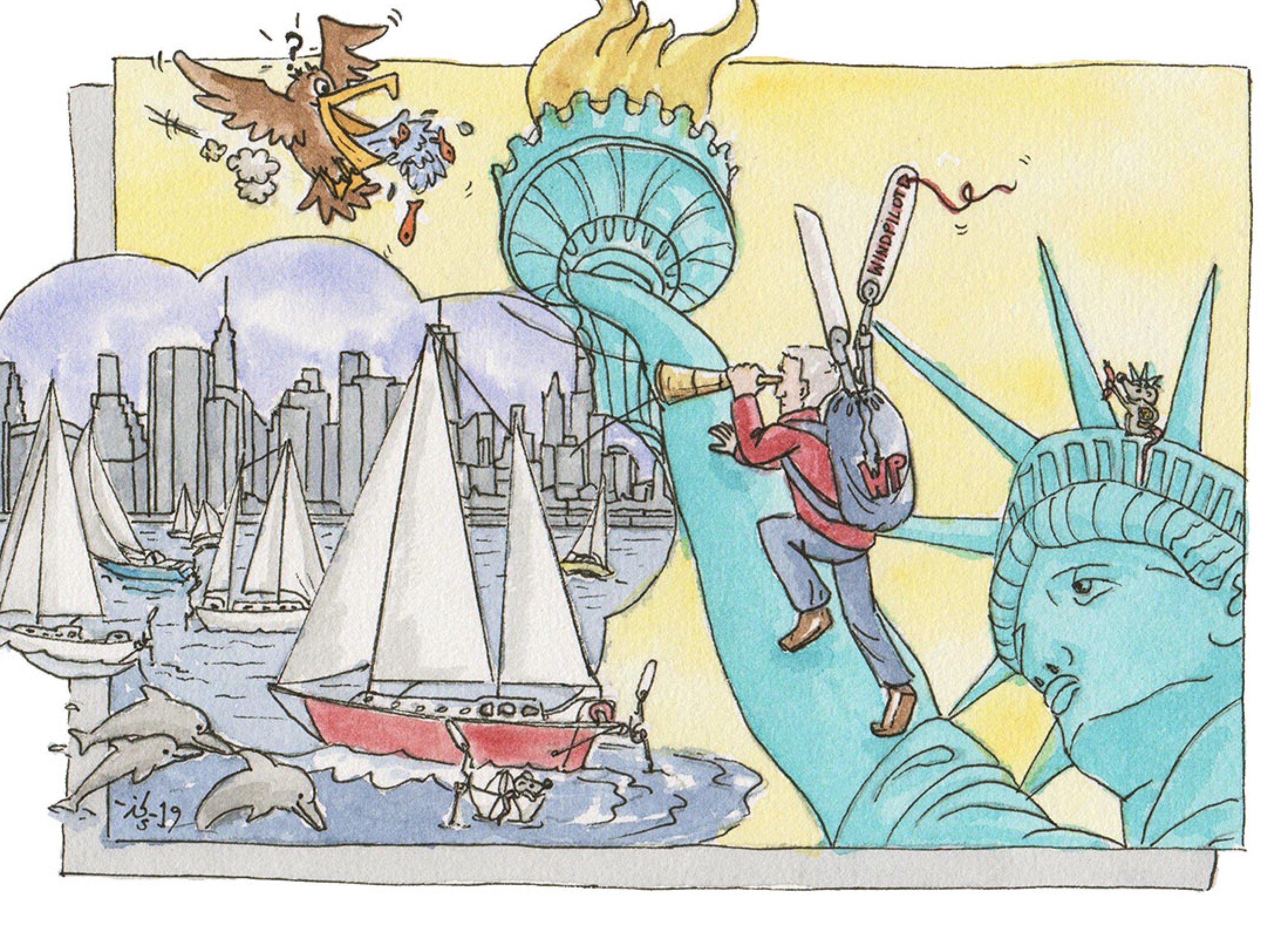
Not all boat shows are alike, it has to be said; indeed a festival of bureaucracy like BOOT (the Düsseldorf International Boat Show) could hardly be more different – in terms of costs, returns and simple charm – to the US Sailboat Show in Annapolis. Annapolis, with its city of exhibition tents anchored to parking meters and an application form that demands nothing more onerous of exhibitors than a cross in the relevant box, continues to do well (and line its organiser’s pockets) by offering a lot of fun for not too much expense and a location that has parking, food and accommodation within walking/tender distance. A show for sailors only, it draws a very knowledgeable crowd (many of whom arrive by water taxi from one of the boats lying at anchor out on the bay). This is the perfect venue to exhibit windvane self-steering systems. Powerboaters have a similar week of their own and for them too, the mantra is very much quality rather than quantity.
Our European show organisers will have no truck with this sort of sailor-centred nonsense. All that matters over here is that there is some kind of link to water to provide a hook for the public. If you sail on it, dive in it, paddle on it or can be persuaded to salivate over it on stage, you’re on the target list. And look, Düsseldorf might be a long way from the sea, but the Rhine is wet too and it flows right past the exhibition halls… Sarcasm? Reality!
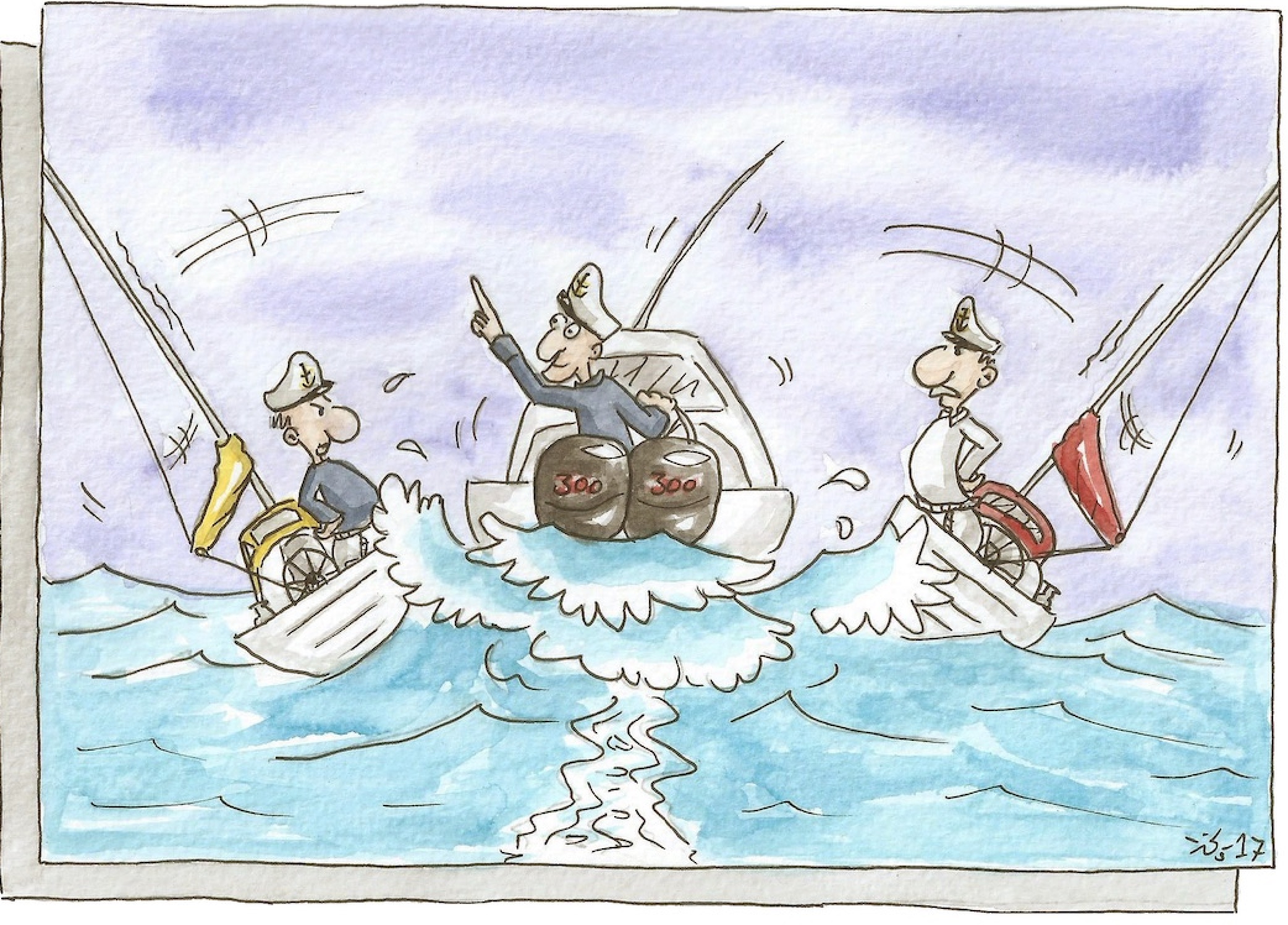
Print is inexorably giving way to online, mainly because paper publications are already out of date before they even hit the shelves – or is there some new trick for dusting down books and updating them over the net? The publishing houses know it and have resigned themselves to their fate (just look at the uninspiring copy they keep churning out). The struggle to generate enough income to pay for an editorial team capable of producing valuable content is just about unwinnable now, whatever the target niche, because we have a blog – or several – covering every angle with a constant supply of new and current content (including video clips to keep us entertained). Expectations are different too: online, we can write what we want when we are ready to write it; work for a print publication on the other hand and you have to produce your accurate, high-quality content in an attractive style to someone else’s requirements and strict deadline if you have any expectation of making a living. The dice are loaded, the consequences already old news.
Is sponsorship the answer then? Sponsorship – welcome to the magic money tree! Those in the know understand perfectly the delicate art of implanting and cultivating a brand in the consumer’s subconscious to short-circuit the decision-making process. Other options alongside sponsorship include greasing the palm of influencers and the blunt instrument of straightforward paid advertising, all of which rely on the principle that in the end, the unwitting target will foot the bill. That’s the plan at least and it certainly appears to work: thanks to apps and cookies, spreading a strategic message has never been easier. Everything rides on reach: how many pairs of eyes are watching? How many hits can you generate? Step aboard the Google train… Do we still make up our own minds or are we all just following orders?
Sponsorship is all about reaching the right people, about knowing your target group and understanding how they think. Sponsorship, in other words, is about hard science and big data. Everyone needs socks, for example, and a Bentley could be handy now and again to add a touch of sparkle to brand Me. Football likewise makes for a relatively simple equation: fans in their zillions are bound to get thirsty so what better to imprint on them than a “sports drink” (what do they care if it doesn’t actually give them wings)? Upfront costs may be high, but the target group is huge – a well-oiled perpetuum mobile with access to all areas – minds, smartphones, accounts… There’s no time to think, of course, but who needs to think?
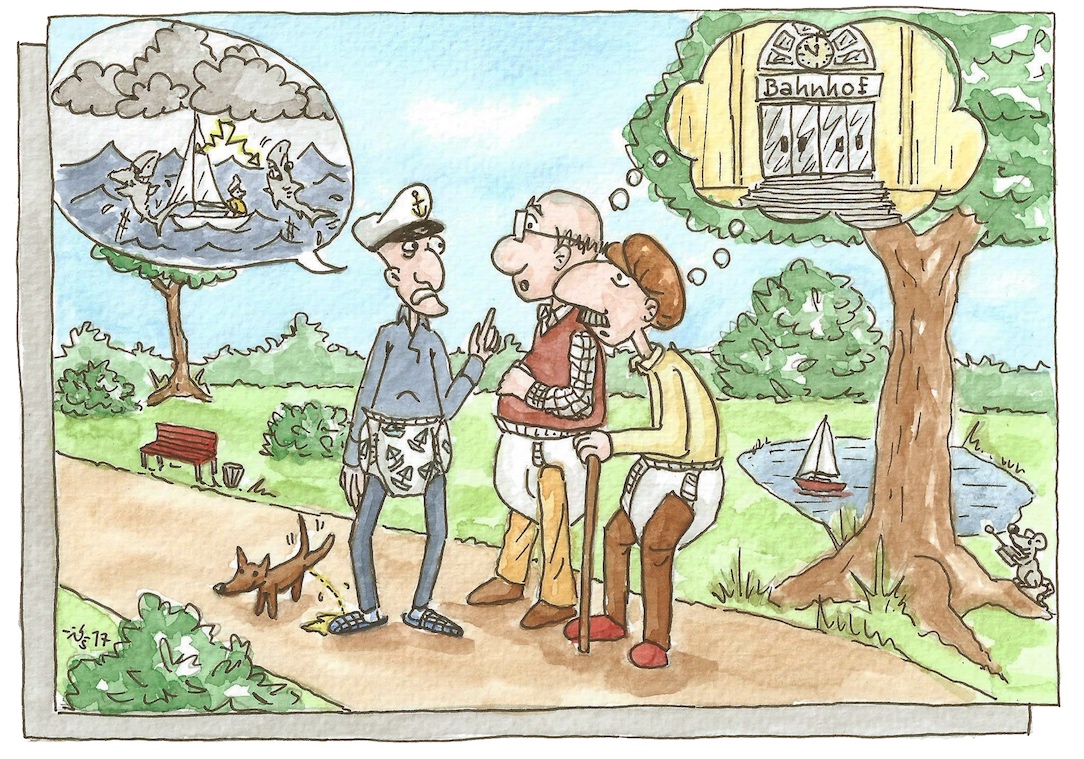
Sadly, the sport of sailing in Germany presents a very different prospect. The sums obviously add up very nicely over in France, but here we see very little evidence that sponsorship can be made to pay. Will his tie-ups with Greta and Monaco enable Boris Herrmann to buck the trend? Time will tell; time and reality-checks like the €600,000 price tag on a new set of foils. The campaigns duking it out in the biggest races have to sustain immense budgets over a prolonged period to keep their nose in front in a world where the cutting edge today is obsolete tomorrow. Should a country invest – and quite likely lose – money in this arena knowing that the target group is minuscule? Should it even aspire to do so? That’s not really a live issue over here in Germany, where everyone knows the story already: money drains away, sponsor loses shirt, stoic spokesperson appears to peddle explanations (82-year old German offshore racer Wolfgang Quix has a lifetime of experience in this field but, significantly, made his living from the insurance business).
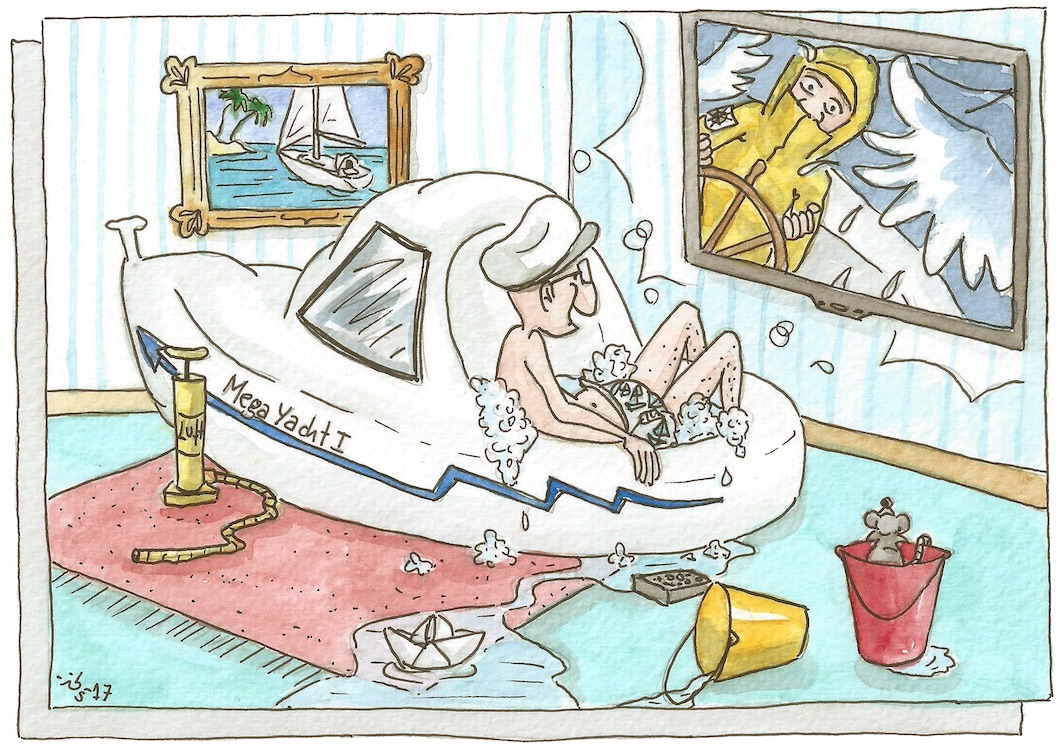
A thorough understanding of target groups is essential when considering the likely cost-benefit breakdown for different marketing approaches. Food, drink, clothes, shoes, personal hygiene products, transport and insurance are on everyone’s shopping list, so broad-based marketing campaigns make sense in these areas: if the message reaches pretty much everyone, only a very small percentage of the target group needs to stop off for an extra burger and fries on the way home to make the outlay worthwhile.
What of the target group for sponsorship in sailing? It’s small, very small, and neither FB and co. nor the “media partners” and the multiplier effect they tout to anyone and everyone (not least, I suspect, in a surreptitious attempt to boost their own click rates) can really do anything lasting about this. Rarely can there be any prospect of generating sufficient hits to tempt a large sponsor (complete with marketing and legal departments) to step up and roll the dice.
Remarkably, there seem to be people in my very own niche – windvane self-steering systems – who believe these fundamental principles of sponsoring and advertising can be upended. Obviously (but discreetly), I have been keeping a close eye on their activities.
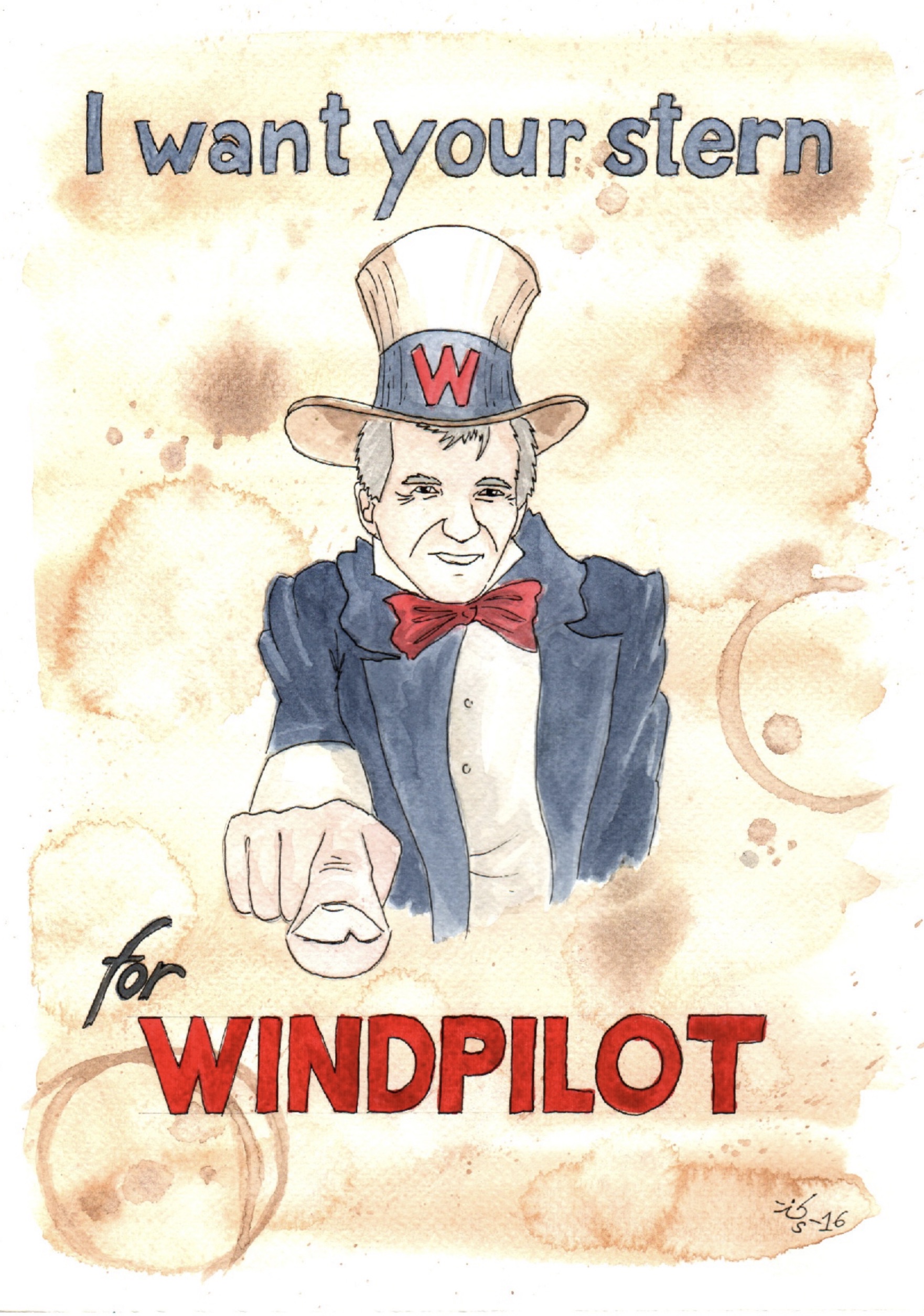
My experiences with sponsorship are on the record. Past events have made me most unenthusiastic about the idea, but in 2018 I decided (against my better judgement) to give it another go. The blame for this lies with one of my competitors, whose pursuit of a unique selling point led it to explore some unconventional (in our segment) avenues that I would not be inclined to consider myself. It goes like this: forget about big money, broad-based marketing and instead pass a moderate sweetener (something, I would suppose, in the region of €5,000 or so) to a rally organiser in exchange for exclusive access to events and seminars and, foot thus in the door, make the sailors’ decision a little easier by mentioning a discount just as the product behind it all makes an appearance. Ideally the organiser will help sales along too by tweaking the rules to favour the particular product concerned (for example by requiring participating yachts to carry an emergency rudder).
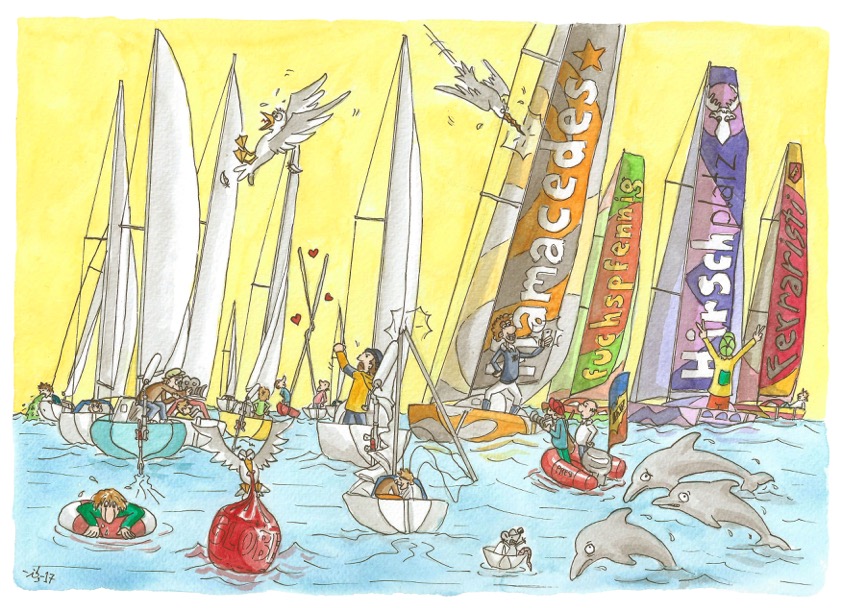
It’s a first class scheme no doubt and I tip my hat to whoever came up with it. Especially as this all has to do with the safety of the sailors! Who could possibly dissent? It obviously went well for the ARC, Pacific Puddle Jump, Baja Ha-Ha and Salty Dawg, so why wouldn’t it work for the Golden Globe Race too? There is a reason: uncomfortable as it may be for the organiser to read, windvane self-steering systems are much, much more important in the GGR – too important for the organiser to put the wishes of his personal sponsor before any other concerns. I hope that explains why I felt I had to be involved.
Despite very strong resistance from the organiser, I provided direct support to five GGR sailors so that we could all see for ourselves – on a global stage – how the leading windvane self-steering systems measured up, both to each other and to the race’s tremendously challenging course. The results can be found in the Windvane Report. By happy coincidence, the events of the GGR enabled us to put to bed a rather objectionable marketing claim brought into the world by a different competitor (and at the same time uncover a similar weakness in a product of broadly the same design from the US).
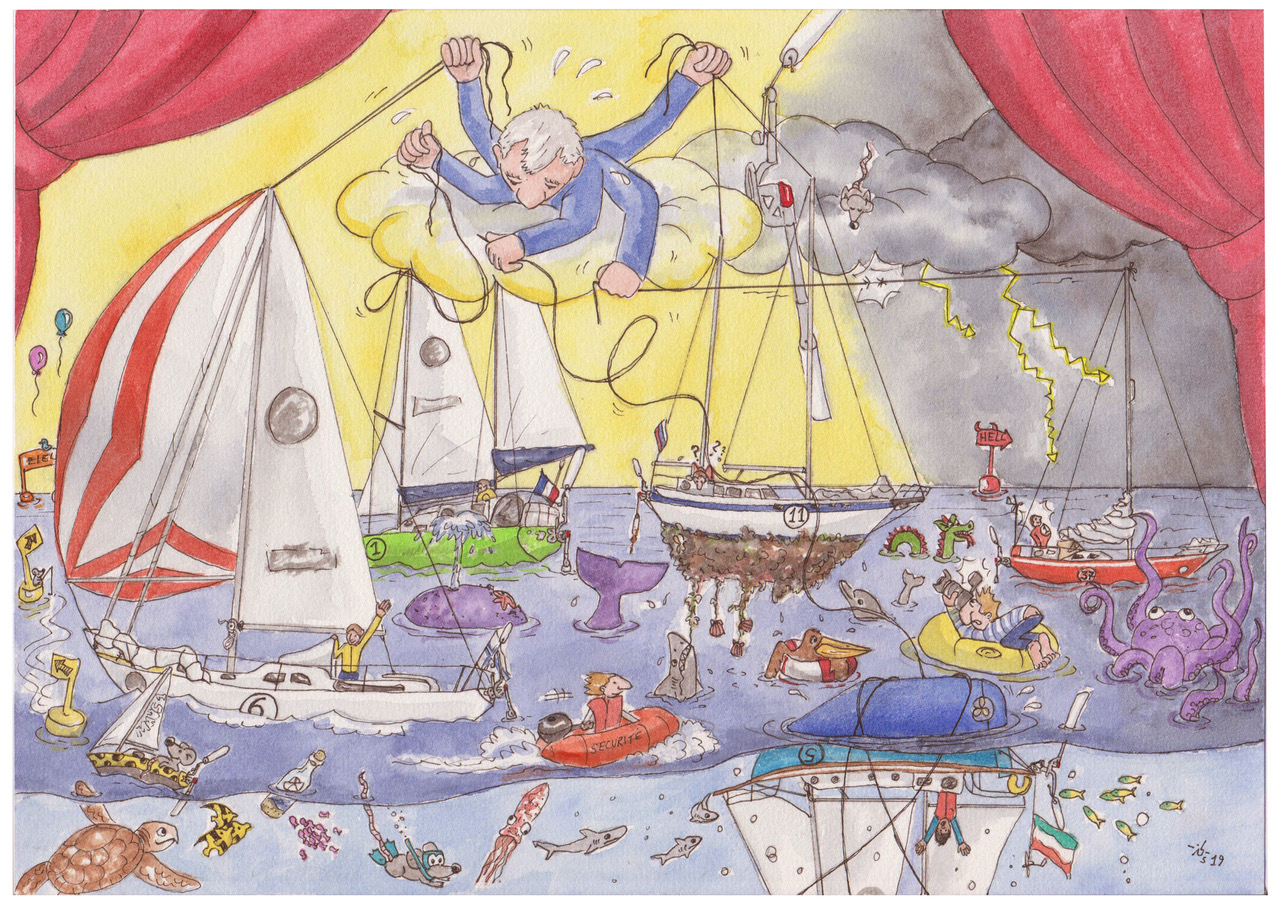
The so-called “Bad Weather Problem” was invented 20 years ago with the sole intention of undermining the reputation of a particular type of product (mine, as it happens) and staking a claim to be the only safe option in bad weather. Imagine my wry smile when, having spent all of the intervening period trying to explain to everyone that there was no such thing, I realised that there actually was a bad weather problem after all but that it was the competition’s product that was afflicted and not, as had unkindly been suggested (and as would have been clear all along to anyone taking the time to investigate), my own.
I can’t leave this review of fast times in the windvane business without mentioning the many imitations that my design philosophy has spawned. Some at least look the part – but when it comes to it, they tend to lack the heart. Why so many? Did they think my brand was becoming too powerful? Ha! It’s only me and my wife here…
I almost forgot the mention my fateful ordeal – a singlehander’s lonely fight to resolve a problem in marine business – in the High Court in London in 1998, which brutally disabused me of any misconceptions I might have had about the media and the way it works. The system of peaceful coexistence between manufacturers and journalists has slid out of kilter altogether since then, which goes a long way to explaining why I decided, ten years ago, to launch this blog about all things transom ornamentation.
Recently I heard reports from visitors to the Düsseldorf boat show about one of my competitors spreading rumours that Windpilot was struggling to fulfil orders. As if that wasn’t enough, somebody suggested in a US forum not long ago that Windpilot was in receivership. How ought I to respond to acts of asymmetric marketing warfare like these? Are they a sign of desperation? Do I need to “do something” or can I safely ignore them? Are they, perhaps, just a sign that the Windpilot medicine is working? Fast times indeed…
Hamburg 02.02.2020
Peter Foerthmann


































Hi Peter,
Why not attend Boat Shows a a “member of the public” but amble around wearing an appropriate T-shirt or Polo shirt with your wind-vane artwork proudly displayed front and back. (Minimal cost! – plenty of exposure)